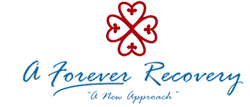New A Forever Recovery Blog Post Looks at Key Facts about the History of Oxycodone


Battle Creek, MI (PRWEB) September 25, 2014
In its latest blog post, A Forever Recovery, an open-ended drug and alcohol treatment program that gets clients off to a great start and gives them a solid foundation in recovery they can believe in, is focusing on key facts about the history of oxycodone.
“While oxycodone was created as a narcotic painkiller to help individuals manage acute post-operational pain, the fact is that millions of people across the country – including many young people – are addicted to this opioid, and don’t realize that the consequences of abuse can be fatal,” commented A Forever Recovery’s Per Wickstrom.
According to the blog post:
Oxycodone is found in a number of prescription medications, including OxyContin, Percocet, Percodan, Combunox, Roxiprin, Roxicodone, Endocet, Endodan and Targiniq ER.
Oxycodone was created by scientists who hailed it as a non-addictive, semi-synthetic substitute for heroin, morphine and opium.
By 1963, Percodan abuse (a combination of oxycodone and aspirin) was cited as the source of 33% of addictions in the State of California.
In 1970, oxycodone was listed as a Schedule II drug in the (then) new Controlled Substances Act. Schedule II drugs, substances or chemicals are defined as drugs with a high potential for abuse, with use potentially leading to severe psychological or physical dependence.
In 1996, OxyContin was introduced as the first pure oxycodone drug
By 1998, OxyContin was responsible for 80% of its maker Perdue’s profits.
Between 1992 and 2006, a survey by the FDA revealed that national admissions for treatment involving opioids spiked from below 40,000 to over 120,000.
A government survey in 2006 across 16 States discovered that more than 50% of addicts admitted to Rehab Facilities were abusing or addicted to oxycodone.
A national survey in 2006 found that 15.6 million Americans aged 12 and older had taken a drug containing oxycodone on a recreational basis, and that 26% of drug users admitted to being addicted to OxyContin.
A 2008 FDA report announced that oxycodone may be more addictive than morphine.
The oxycodone abuse epidemic has led to the emergence of “pill mills” across the country, where unethical doctors prescribe bottle after bottle of pain medication without a proper exam.
To prevent addicts from crushing OxyContin, a new gel formulation was released in 2013. The FDA also removed all crushable OxyContin from sale.
“While the new tamper-proof formulation may prevent some from abusing OxyContin, the fact is that addicts are resourceful and they’ll turn their attention to other opiates – some of which are even more potent and addictive,” added Per Wickstrom. “As concerned individuals, groups and governments work to prevent future addicts, it’s also important for everyone to realize that individuals already addicted need treatment. Addiction never goes away on its own. On the contrary, it gets worse and worse until the addict ends up in jail, the hospital, or the morgue.”
The full text of A Forever Recovery’s latest blog post entitled “Some Facts You Should Know about the History of Oxycodone” is available at http://aforeverrecovery.com/blog/drugs/facts-know-history-oxycodone/
About A Forever Recovery
A Forever Recovery program is an open-ended drug and alcohol treatment program that gets clients off to a great start and gives them a solid foundation in recovery they can believe in. Not every treatment methodology works for every client. Some people are very receptive to 12-step principles, whereas others are more comfortable with faith-based treatment. Cognitive approaches have excellent success, whereas others thrive within a more holistic approach. A Forever Recovery allows clients to choose from a wide range of recovery methodologies, coupled with Moral Recognition Therapy (MRT), to achieve success rates unmatched in the addiction treatment industry. The bottom line is that there is no single therapeutic approach to recovery that works for everyone… until now.
Learn more at http://aforeverrecovery.com/
Find More Physics Press Releases